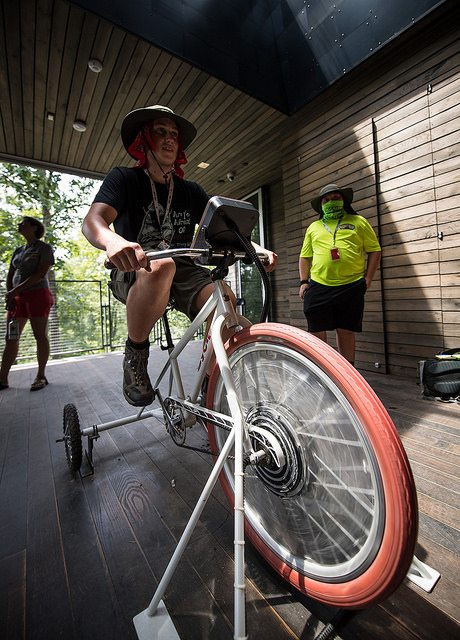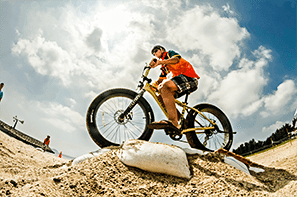
A Sustainable Jamboree
The 24th World Scout Jamboree is committed to Sustainability and the Summit Bechtel Reserve was built to be among the world’s most sustainable Scout centers. Among the many sustainable features at the Summit Bechtel Reserve are:
Energy—The buildings at the Summit Bechtel Reserve are designed to use 30 percent less energy than conventional structures. The Summit Bechtel Reserve has also made investments in on-site renewable energy generation, including geothermal wells, photovoltaic solar panels, and wind turbines to reduce operating costs.
Water—Recognizing its role in protecting the New River, the Summit Bechtel Reserve uses a network of 60 acres of swales and rain garden to treat runoff by filtering it through plants. The Summit Bechtel Reserve also employs gray-water systems, low-flow fixtures, and composting toilets to reduce water use by two-thirds.
Materials—The Summit Bechtel Reserve is committed to thrifty and resourceful use of materials. Timber was salvaged for reuse in structures, while other materials were sourced from within 500 miles of the project to reduce emissions.
Habitat conservation—A full 10 percent (that’s 1,060 acres) of the site’s most ecologically- valuable land has been dedicated as a nature preserve. The Summit Bechtel Reserve has also planted over 60,000 Appalachian hardwood trees and established native grasses on campsites to restore wildlife habitat. Scouts can also explore the McAllister Family Sustainability Challenge Trail and the Sustainability Treehouse at Scott Summit Center.
Watch our latest video to learn more about sustainability efforts at the 24th World Scout Jamboree and look for updates on sustainability at jamboree in future editions of the New World News Blog.
This page is also available in: Español
 Print This Post
Print This Post

